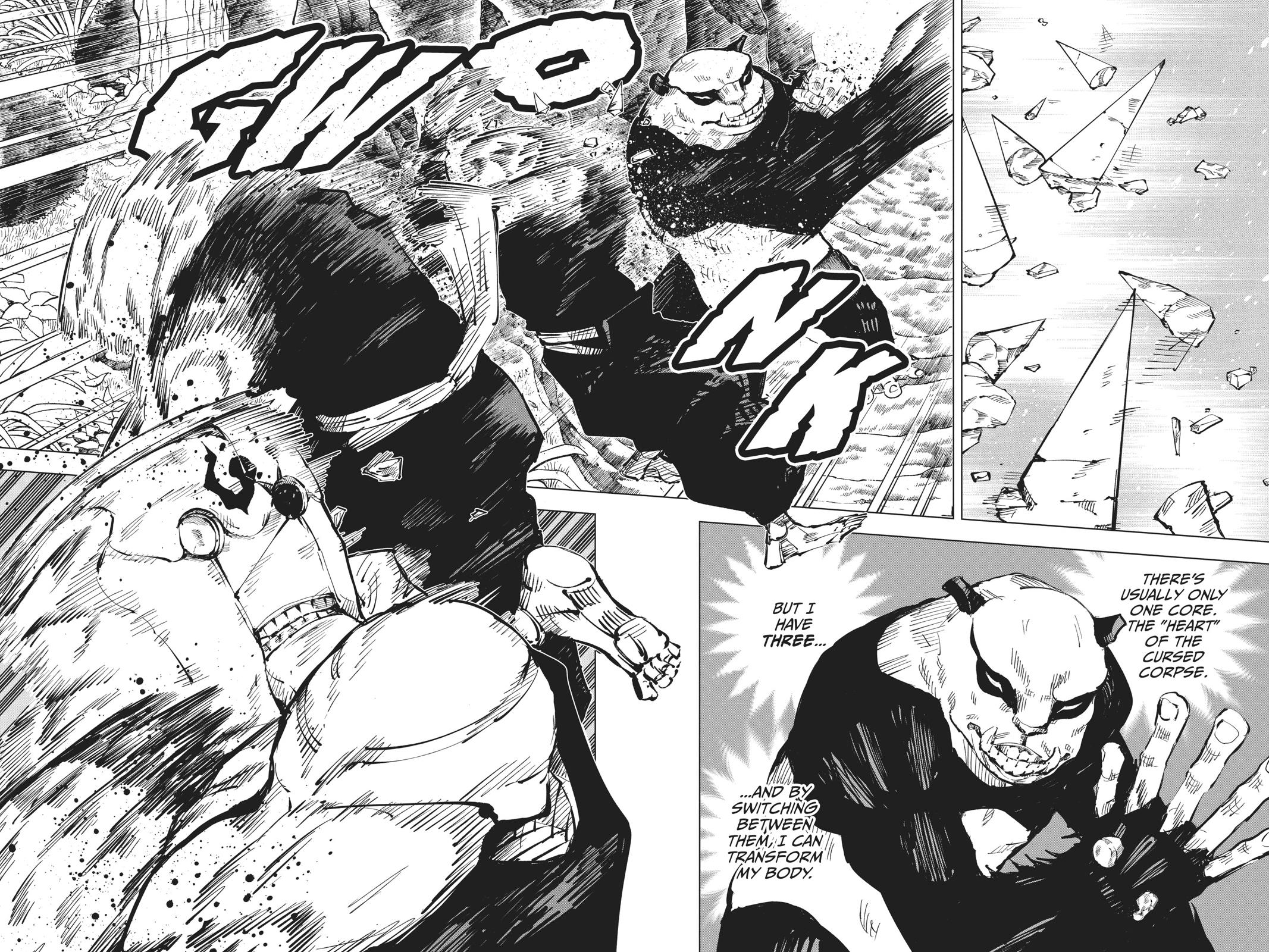Have you ever wondered how ancient martial artists managed to stop opponents in their tracks with a single move? Welcome to the world of Jujustu Paralyzing Trick, where technique meets strategy in the ultimate art of self-defense. This is not just about brute force—it's about precision, timing, and understanding the human body. Whether you're a martial arts enthusiast, a self-defense student, or just plain curious, this guide will blow your mind.
You might have seen it in movies or read about it in books, but there's so much more to Jujustu than meets the eye. This technique has been refined over centuries, passed down through generations of masters who dedicated their lives to perfecting the art of immobilization. And guess what? It's not just for ninjas anymore. Modern practitioners are using Jujustu Paralyzing Tricks to enhance their skills in real-world scenarios.
In today's fast-paced world, knowing how to protect yourself is more important than ever. The Jujustu Paralyzing Trick is not just about stopping an attacker—it's about gaining control, staying safe, and even diffusing dangerous situations without causing unnecessary harm. So, buckle up, because we're about to dive deep into the fascinating world of Jujustu and uncover the secrets that have kept it relevant for centuries.
- Unveiling The Mystique Of Harbor Elm Your Ultimate Guide
- Ashley Inked The Ultimate Guide To Her Inspiring Journey Inked Adventures And More
Here's what we'll cover:
- History of Jujustu Paralyzing Trick
- Basics of Jujustu Techniques
- Core Principles of Paralyzing Tricks
- Key Techniques to Master
- Real-World Applications
- Safety Tips for Practitioners
- Training Programs and Resources
- Benefits Beyond Self-Defense
- Common Mistakes to Avoid
- The Future of Jujustu
The Ancient Roots of Jujustu Paralyzing Trick
Let's take a trip back in time to understand where this incredible art form originated. Jujustu, which translates to "gentle art," was developed in feudal Japan as a form of unarmed combat for samurai warriors. Back then, battles were brutal, and warriors needed a way to defend themselves when they lost their swords. Enter Jujustu—a system of joint locks, throws, and striking techniques designed to incapacitate opponents efficiently.
But here's the kicker: Jujustu wasn't just about brute force. It focused on using an opponent's energy against them, making it a highly intelligent and strategic form of combat. The paralyzing trick, in particular, was a game-changer. By targeting specific pressure points and nerve clusters, practitioners could immobilize opponents with minimal effort. Cool, right?
- What Does Bta Mean In Text Unveiling The Mystery Behind This Trendy Acronym
- Azealia Banks September 9 The Untold Story Of A Fearless Icon
Over time, Jujustu evolved and spread across the globe, influencing modern martial arts like Judo and Brazilian Jiu-Jitsu. But the core principles of the paralyzing trick remained unchanged, proving that some things truly stand the test of time.
Breaking Down the Basics of Jujustu Techniques
Before we dive into the paralyzing tricks themselves, let's talk about the foundation of Jujustu. This martial art is all about balance, leverage, and control. Here are a few key concepts to keep in mind:
- Kuzushi: This is the art of breaking your opponent's balance. Without balance, they become easier to manipulate and control.
- Tai Sabaki: Body movement is crucial in Jujustu. You need to position yourself strategically to avoid attacks while setting up your own.
- Kansetsu Waza: Joint locks are a staple of Jujustu. By manipulating joints like the elbow or shoulder, you can effectively neutralize an opponent.
These basics might sound simple, but they're the building blocks of every advanced technique, including the paralyzing trick. Master them, and you'll be well on your way to becoming a Jujustu expert.
Core Principles of Paralyzing Tricks
Now, let's get down to business. What makes the Jujustu Paralyzing Trick so effective? It all comes down to three core principles:
- Pressure Points: The human body is full of sensitive areas that, when pressed or manipulated, can cause temporary paralysis or extreme discomfort. Jujustu practitioners know exactly where to strike.
- Nerve Clusters: Targeting nerve clusters can disrupt an opponent's ability to move, making them vulnerable to further attacks or immobilization.
- Precision: Accuracy is key. A well-placed strike or touch can achieve far more than a wild swing. This is why training and practice are so important.
These principles aren't just theoretical—they're backed by centuries of practice and modern scientific research. Studies have shown that targeted pressure on specific areas of the body can indeed cause temporary paralysis or incapacitation, making Jujustu techniques highly effective in real-world scenarios.
Key Techniques to Master
Ready to learn some moves? Here are a few Jujustu Paralyzing Tricks that every practitioner should know:
- Teisho Uke: A palm strike to the jaw that can momentarily stun an opponent.
- Kote Gaeshi: A wrist lock that targets the radial nerve, causing pain and limiting movement.
- Shiho Nage: A four-direction throw that uses an opponent's momentum to send them to the ground.
Each of these techniques requires practice and precision, but once mastered, they can be incredibly effective. Remember, the goal isn't always to harm your opponent—it's to gain control and protect yourself.
Real-World Applications of Jujustu Paralyzing Trick
So, how does this ancient art apply to modern life? The truth is, Jujustu Paralyzing Tricks are more relevant today than ever. Whether you're dealing with a mugger on the street or trying to de-escalate a tense situation, these techniques can come in handy.
For law enforcement officers, Jujustu provides a non-lethal way to subdue suspects without causing permanent injury. For civilians, it offers a way to protect themselves and their loved ones in dangerous situations. And for martial artists, it's simply another tool in their arsenal of skills.
But here's the thing: Jujustu isn't just about physical combat. The mental discipline and focus required to master these techniques can have profound effects on your daily life. You'll find yourself more calm, confident, and capable of handling stress in any situation.
Safety Tips for Practitioners
Before you start practicing Jujustu Paralyzing Tricks, there are a few safety tips you need to keep in mind:
- Always practice with a partner who knows what they're doing.
- Start slow and focus on precision rather than power.
- Never use these techniques outside of a controlled environment unless absolutely necessary.
Remember, the goal is to protect yourself, not to cause harm. Practicing safely ensures that you can continue learning and growing without putting yourself or others at risk.
Training Programs and Resources
Ready to take the next step? There are plenty of training programs and resources available for those looking to master Jujustu Paralyzing Tricks. Here are a few options to consider:
- Dojo Training: Joining a local dojo is the best way to learn from experienced instructors in a structured environment.
- Online Courses: If you prefer to learn at your own pace, there are plenty of online courses that cover Jujustu techniques in detail.
- Books and Manuals: For those who like to dive deep into theory, there are countless books and manuals written by Jujustu masters over the centuries.
No matter which path you choose, consistency is key. Dedicate time each day to practice and refine your skills, and you'll see progress in no time.
Benefits Beyond Self-Defense
While self-defense is obviously a major benefit of learning Jujustu, there are plenty of other advantages to consider:
- Physical Fitness: Jujustu is a full-body workout that improves strength, flexibility, and endurance.
- Mental Discipline: The focus and concentration required to master Jujustu techniques can help you in all areas of life.
- Confidence: Knowing you can protect yourself can boost your self-esteem and make you feel more empowered.
These benefits extend far beyond the dojo, making Jujustu a valuable skill for anyone looking to improve their overall well-being.
Common Mistakes to Avoid
Even the best practitioners make mistakes when learning new techniques. Here are a few common pitfalls to watch out for:
- Overusing Force: Jujustu is about precision, not power. Relying too much on brute strength can lead to ineffective techniques.
- Ignoring Balance: Kuzushi is crucial, so always focus on breaking your opponent's balance before attempting a move.
- Skipping the Basics: Don't rush to advanced techniques without mastering the fundamentals first.
Avoid these mistakes, and you'll find yourself progressing much faster in your Jujustu journey.
The Future of Jujustu
As we move further into the 21st century, Jujustu continues to evolve and adapt to modern needs. With advancements in technology and a growing interest in self-defense, the art form is more popular than ever. Who knows? Maybe one day, Jujustu Paralyzing Tricks will become a staple in mainstream fitness and self-defense programs worldwide.
For now, the best thing you can do is continue learning and practicing. The more you know, the better equipped you'll be to handle whatever life throws your way. And who knows? You might just become the next Jujustu master.
Final Thoughts
In conclusion, the Jujustu Paralyzing Trick is a fascinating and powerful technique with roots in ancient Japan. By mastering the basics, understanding the core principles, and practicing consistently, you can unlock its full potential and enhance your self-defense skills. Remember, the goal is not just to protect yourself but to grow as a person and become more confident in all areas of life.
So, what are you waiting for? Get out there and start practicing! And don't forget to share this article with your friends and fellow martial artists. Together, we can keep the art of Jujustu alive and thriving for generations to come.
- Unleashing The Power Of Ai Fbb Your Ultimate Guide To Transforming Everyday Life
- Gays Eating Garlic Bread In The Park A Celebration Of Joy Diversity And Deliciousness


